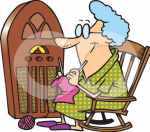Overview
Licencing of all broadcasting operations in Australia is subject to very tight and rigorous controls by the Australian
Communications and Media Authority (ACMA)
HF broadcasting describes the operation of broadcasting services
designed to provide either a domestic service within Australia and its territories, or an overseas service, in the HF bands.
In December 2000, the Radcomm Act and the Broadcasting Services
Act (BSA) were amended to enable non-national broadcasters to provide an HF broadcasting service. The legislative changes
were specifically designed so that HF international broadcasters should undergo a vetting process involving both the ACMA
and the Minister for Foreign Affairs. The successful outcome of this vetting process would be an international broadcasting
licence (IBL) issued under the BSA.
The ACMA has developed three licensing options in the broadcasting
licence type to accommodate HF broadcasting.
HF overseas (IBL)
service station
This broadcasting licensing
option accommodates the operation, in the frequency range 5.9 MHz to 26.1 MHz, of HF overseas (IBL) service station(s), operated
by non-national broadcasters for the purpose of providing international broadcasting services. An international broadcasting
licence (IBL) must be in force authorising the operation of the international broadcasting service.
HF overseas
service station
This
broadcasting licensing option accommodates the operation of HF overseas service station(s) in the frequency range 5.9 MHz
to 26.1 MHz for the purpose of providing broadcasting services to overseas locations.
This licensing option is used only to authorise HF overseas service
station(s) operated by national broadcasting services (that is, the ABC and the SBS) and other 'exempt broadcasting' services
(as defined in the BSA). Holding an IBL is not a requirement of this licensing option.
HF domestic
service station
This
broadcasting licensing option accommodates the operation of HF domestic service station(s) in the frequency range 2.3 MHz
to 26.1 MHz, within Australia and its territories.
An IBL may be required if the broadcasting service is targeted to
a significant extent to audiences outside Australia. That would require the potential licensee to be also licensed under the
appropriate overseas licensing option.
Spectrum use
International high frequency
broadcasting uses the frequency range 5.9 MHz to 26.1 MHz). Frequency assignment within this frequency range is subject to
the provision of Article S12 of the International Telecommunication Union (ITU) Radio Regulations. In addition, assignments
in bands shared with non-broadcasting services must be coordinated by the ACMA.

